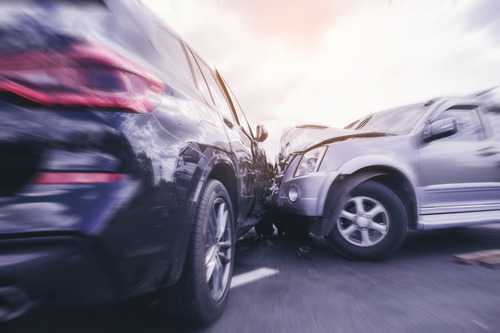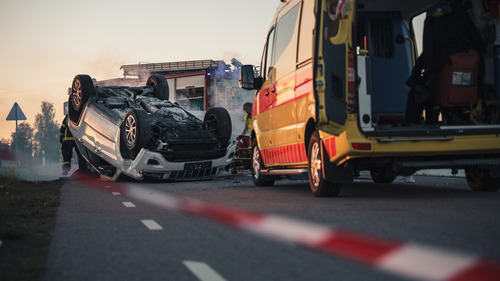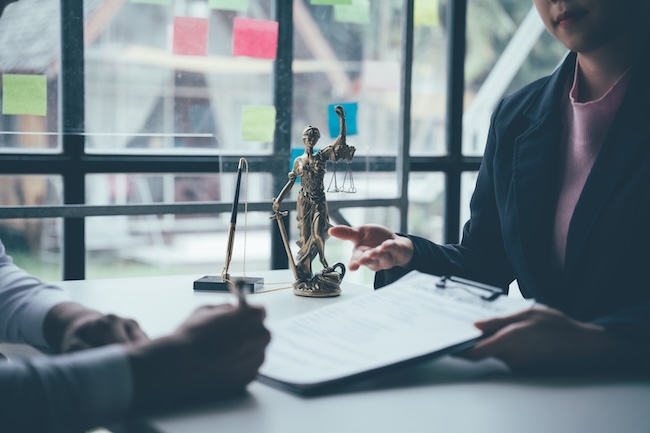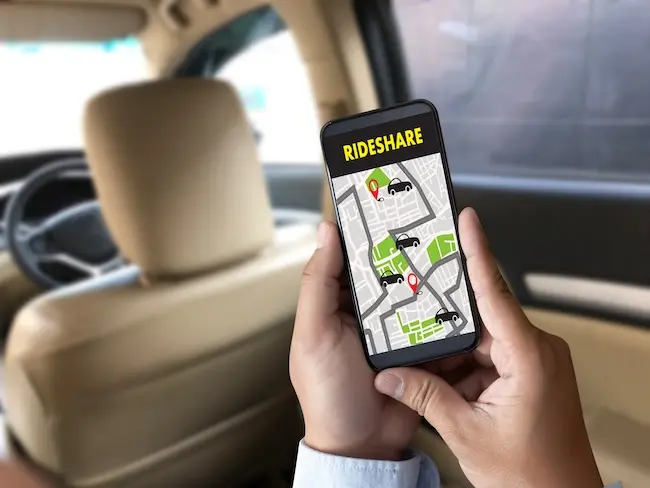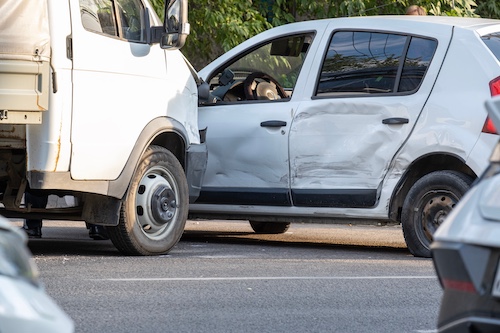At Panchenko Law Firm, we are dedicated to providing personalized and strategic legal representation to clients throughout the Charlotte area. Our team of experienced attorneys specializes in personal injury law, including cases involving car accidents, truck accidents, and workers’ compensation claims. We understand the challenges our clients face and are committed to guiding them through every step of the legal process with compassion and professionalism. Our goal is to ensure that each client receives the justice and compensation they deserve.
A multi-car accident on a highway like I-485 can leave you injured, overwhelmed, and unsure of what to do next. These crashes often involve three or more vehicles, making it difficult to tell who is at fault and how to deal with the aftermath. With multiple drivers, insurance companies, and legal rules involved, the situation can become complicated fast. In North Carolina, one mistake can prevent you from getting compensation due to the state’s pure contributory negligence law.
In this blog, we cover what to do after a multi-car accident, how fault is determined under North Carolina law, and why working with an experienced Charlotte car accident attorney at Panchenko Law Firm can make a critical difference in protecting your rights and pursuing compensation.
What is a Multi-Car Pileup and Why It Happens
A multi-car pileup is one of the most dangerous types of car accidents, often leading to severe injuries, heavy property damage, and complex insurance claims.
What Defines a Multi-Car Accident
A multi-car accident, also called a multi-vehicle accident or chain reaction crash, involves three or more vehicles. It starts when one car crashes and causes a series of follow-up impacts. These crashes often involve multiple drivers, happen at high speeds, and can spread across several lanes. On roads like I-485, heavy traffic and fast-moving cars make these incidents more likely and more damaging.
Common Triggers of a Multi-Vehicle Collision
Several conditions lead to multi-car pileups. These include poor visibility, wet roads, tailgating, and driver distraction. For example, during rain or fog, a rear-end collision can occur if a driver fails to see a slowing vehicle ahead. That impact can push the hit car into others, creating a chain of crashes. On high-volume highways like I-485, the speed of traffic means there’s less time to react, and a minor crash can quickly involve many vehicles.
How Chain Reactions Form
Most multi-car accidents begin with a single impact. After the initial collision, nearby vehicles try to stop or swerve. When space is limited, this often leads to a second crash, then a third. Each impact increases the number of vehicles involved. In many cases, drivers in the later crashes had no time or room to escape. These chain reaction accidents can involve dozens of cars, especially in tight traffic.
The Dangers of Multi-Car Pileups
These accidents are dangerous because of their size, speed, and confusion. They often cause serious injuries or worse. Emergency access is harder when multiple vehicles are blocking lanes. There is a higher chance of fires, fuel leaks, and further collisions. Legally, these crashes are difficult under North Carolina law. The pure contributory negligence rule (N.C. Gen. Stat. § 1-139) means you cannot recover compensation if you’re even 1% at fault. This makes it critical to know how the accident occurred and who caused the crash.
Immediate Steps to Take After a Multi-Car Crash
Taking the right actions after a multi-car accident can protect your health, legal rights, and ability to recover fair compensation.
Move to Safety If Possible
If your vehicle is operable and it’s safe, move it to the shoulder or out of traffic. Activate your hazard lights. In large multi-vehicle accidents, remaining in active lanes increases the risk of further collisions. If your car is immobile, stay inside with your seatbelt fastened until help arrives, unless there’s immediate danger like fire or leaking fuel.
Call 911 Immediately
Dial 911 to report the accident. Inform the dispatcher it’s a multi-car pileup involving multiple vehicles and potential serious injuries. Emergency responders need details about the number of drivers and passengers involved. Police will secure the scene, assist the injured, and create a police report—a crucial document for insurance adjusters and legal claims.
Seek Medical Attention Promptly
Even if you feel uninjured, consult a medical professional. Multi-car crashes often cause bodily injuries that aren’t immediately apparent. Adrenaline can mask pain from whiplash, head injuries, or internal damage. Delaying care can hinder recovery and weaken your claim with your insurance company or in court.
Document the Scene Thoroughly
Use your phone to capture photos or videos of the vehicles involved, property damage, and road conditions. Take both close-up and wide-angle shots. Document skid marks, debris, and weather conditions. If possible, obtain contact information from other drivers, passengers, and witnesses. This evidence can help establish who caused the initial collision and protect you from blame in a chain reaction crash.
Avoid Admitting Fault
Choose your words carefully. Do not apologize or accept blame for the accident, even if you think you may be partially responsible. In North Carolina, admitting fault—even slightly—can prevent you from recovering damages due to pure contributory negligence. Allow the investigation to determine responsibility.
Notify Your Insurance Company
Report the multi-car accident to your insurance company promptly. Provide factual information without giving detailed statements until you fully understand the situation. If contacted by insurance adjusters from other parties, refrain from discussing the accident without consulting a lawyer. They may attempt to shift blame or minimize your insurance coverage.
Contact a Car Accident Lawyer
After a multi-vehicle collision, seeking legal assistance is often necessary. Our car accident lawyers at Panchenko Law Firm specialize in handling complex accident cases in Charlotte, North Carolina. We can assist in gathering evidence, negotiating with insurance companies, and protecting your rights under North Carolina law. Acting promptly strengthens your case. Panchenko Law Firm offers a free consultation, allowing you to understand your options without any financial obligation.
Determining Fault in a Multi-Vehicle Accident in North Carolina
Fault in a multi-car accident can be hard to prove, especially when multiple vehicles and drivers are involved.
The Challenge of Proving Fault
In a multi-vehicle collision, more than one driver may share responsibility. It can begin with one rear-end crash and quickly involve three or more vehicles in a chain reaction. Every impact adds to the damage, confusion, and complexity. Police, insurance adjusters, and attorneys look at how the accident occurred, what caused the initial collision, and whether any other drivers made the situation worse. In many cases, each party blames someone else.
Pure Contributory Negligence in North Carolina
North Carolina follows a pure contributory negligence rule. This means if you are even 1% at fault, you cannot recover compensation. This law is strict and often limits injured drivers from receiving fair compensation, even when their role in the crash was small. For example, if you were speeding slightly or following too closely, you might be denied coverage even if someone else caused the crash.
Common Scenarios in Multi-Car Crashes
Some multi-car pileups begin with a single driver rear-ending another. Others happen when one car brakes suddenly, leading to a chain of impacts. Second crashes may be worse than the first. Some drivers involved may not have had time to react. On roads like I-485, poor visibility and high speed make these accidents more likely. Determining which vehicle started the crash and how other vehicles responded is key in assigning fault.
Role of the Police Report and Evidence
The police report is a starting point. Officers at the scene document statements, damage, and possible traffic violations. This report helps insurance companies begin their review. But it’s not the only evidence. Video footage, dash cams, photos, and witness statements also help prove who is the at fault driver. In a multi-car crash, strong evidence can protect you from being wrongly blamed.
Why Fault Matters for Insurance Claims
Because of North Carolina’s fault laws, liability insurance will only pay if the other driver is 100% at fault. If fault is shared, insurance coverage may be denied entirely. That’s why proving who caused the multi-car accident is critical. Without clear evidence, you may be left paying your own medical bills, repair costs, and other damages, even if you were seriously injured.
Get Legal Help to Prove Fault
After a multi-vehicle accident, it’s important to get help from a lawyer who understands North Carolina traffic laws. Our car accident lawyers at Panchenko Law Firm can review the facts, analyze evidence, and help prove who was responsible. This is especially important under the state’s strict negligence law. We offer a free consultation and can take action quickly to protect your case.
Contact an Experienced Charlotte Car Accident Lawyer Today!
If you’ve been injured in a multi-car accident on I-485 or another North Carolina roadway, the steps you take next can make a big difference. Don’t try to deal with the insurance companies or legal system on your own, especially under North Carolina’s strict pure contributory negligence laws. Our team at Panchenko Law Firm has the experience to handle multi-vehicle collisions, gather the right evidence, and build a strong case on your behalf.
Contact us at (704) 900-7675 for a free case consultation today!

